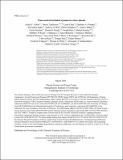| dc.contributor.author | Bott, Archie F.A. | en_US |
| dc.contributor.author | Tzeferacos, Petros | en_US |
| dc.contributor.author | Chen, Laura | en_US |
| dc.contributor.author | Palmer, Charlotte A.J. | en_US |
| dc.contributor.author | Rigby, Alexandra | en_US |
| dc.contributor.author | Bell, Anthony R. | en_US |
| dc.contributor.author | Bingham, Robert | en_US |
| dc.contributor.author | Birkel, Andrew | en_US |
| dc.contributor.author | Graziani, Carlo | en_US |
| dc.contributor.author | Froula, Dustin H. | en_US |
| dc.contributor.author | Katz, Joseph | en_US |
| dc.contributor.author | Koenig, Michel | en_US |
| dc.contributor.author | Kunz, Matthew W. | en_US |
| dc.contributor.author | Li, Chi-Kang | en_US |
| dc.contributor.author | Meinecke, Jena | en_US |
| dc.contributor.author | Miniati, Francesco | en_US |
| dc.contributor.author | Petrasso, Richard D. | en_US |
| dc.contributor.author | Park, Hye-Sook | en_US |
| dc.contributor.author | Remington, Bruce A. | en_US |
| dc.contributor.author | Reville, Brian | en_US |
| dc.contributor.author | Ross, J. Steven | en_US |
| dc.contributor.author | Ryu, Dongsu | en_US |
| dc.contributor.author | Ryutov, Dmitri | en_US |
| dc.contributor.author | Séguin, Fredrick H. | en_US |
| dc.contributor.author | White, Thomas G. | en_US |
| dc.contributor.author | Schekochihin, Alexander A. | en_US |
| dc.contributor.author | Lamb, Donald Q. | en_US |
| dc.contributor.author | Gregori, Gianluca | en_US |
| dc.date.accessioned | 2025-03-21T20:18:47Z | |
| dc.date.available | 2025-03-21T20:18:47Z | |
| dc.date.issued | 2021-03 | |
| dc.identifier | 21ja017 | |
| dc.identifier.uri | https://hdl.handle.net/1721.1/158668 | |
| dc.description | Submitted for publication in Proceedings of the National Academy of Science | |
| dc.description.abstract | Understanding magnetic-field generation and amplification in turbulent plasma is essential to account for observations of magnetic fields in the universe. A theoretical framework attributing the origin and sustainment of these fields to the so-called fluctuation dynamo was recently validated by experiments on laser facilities in low-magnetic-Prandtl-number plasmas (Pm<1). However, the same framework proposes that the fluctuation dynamo should operate differently when Pm≳1, the regime relevant to many astrophysical environments such as the intracluster medium of galaxy clusters. This paper reports an experiment that creates a laboratory Pm≳1 plasma dynamo. We provide a time-resolved characterization of the plasma’s evolution, measuring temperatures, densities, flow velocities, and magnetic fields, which allows us to explore various stages of the fluctuation dynamo’s operation on seed magnetic fields generated by the action of the Biermann-battery mechanism during the initial drive-laser target interaction. The magnetic energy in structures with characteristic scales close to the driving scale of the stochastic motions is found to increase by almost three orders of magnitude and saturate dynamically. It is shown that the initial growth of these fields occurs at a much greater rate than the turnover rate of the driving-scale stochastic motions. Our results point to the possibility that plasma turbulence produced by strong shear can generate fields more efficiently at the driving scale than anticipated by idealized magnetohydrodynamics (MHD) simulations of the nonhelical fluctuation dynamo; this finding could help explain the large-scale fields inferred from observations of astrophysical systems. | |
| dc.publisher | PNAS | en_US |
| dc.relation.isversionof | doi.org/10.1073/pnas.2015729118 | |
| dc.source | Plasma Science and Fusion Center | en_US |
| dc.title | Time-resolved turbulent dynamo in a laser plasma | en_US |
| dc.type | Article | en_US |
| dc.contributor.department | Massachusetts Institute of Technology. Plasma Science and Fusion Center | |
| dc.relation.journal | Proceedings of the National Academy of Science | |
